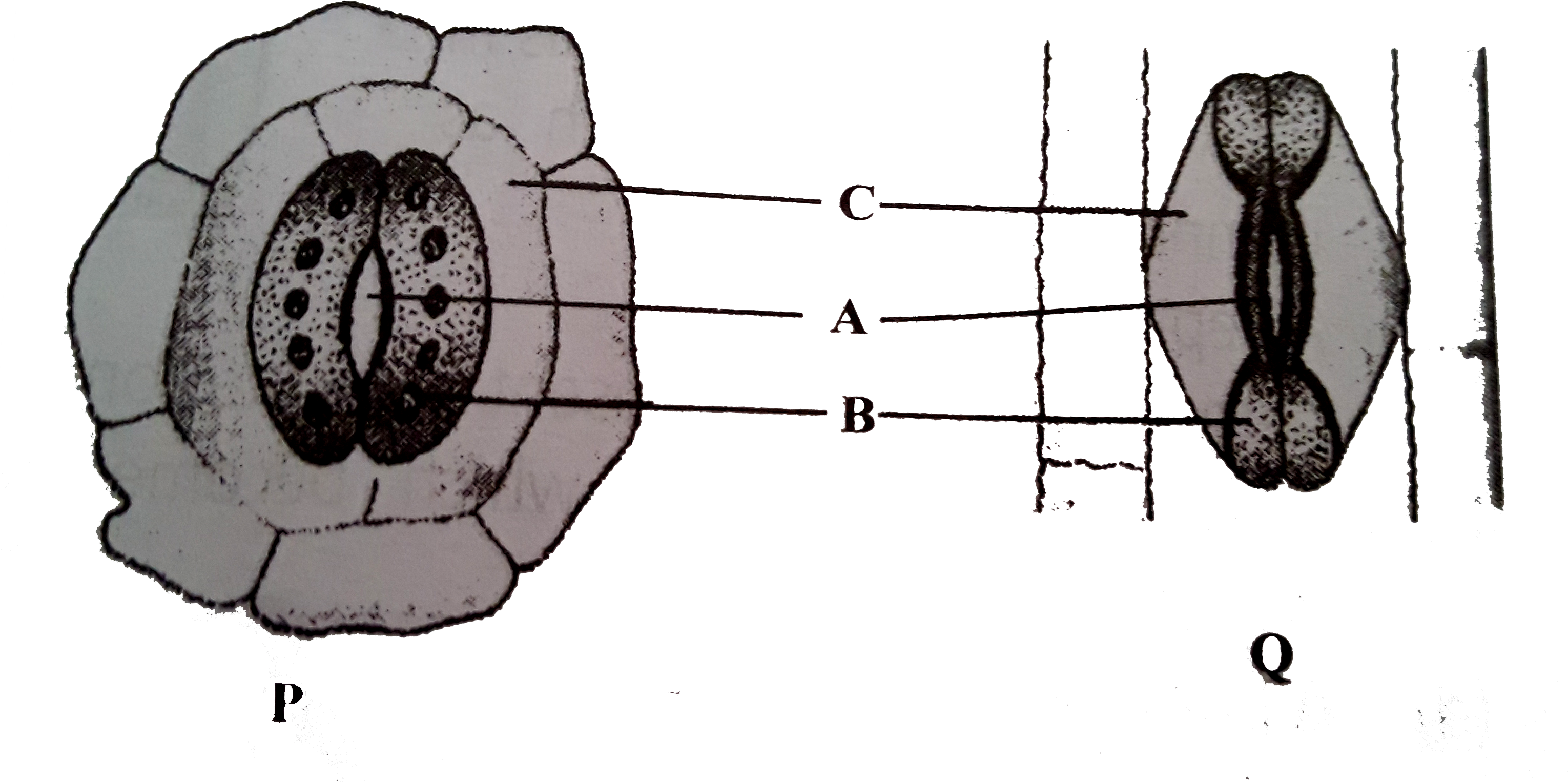Monocot leaves show
both spongy and palisade mesophyll
only palisade mesophyll
only spongy mesophyll
none of the above.
The correct Answer is:C
Step by step video & image solution for Monocot leaves show by Biology experts to help you in doubts & scoring excellent marks in Class 12 exams.
Topper's Solved these Questions
Similar Questions
Knowledge Check
- Question 1 - Select One

Given figures (P and Q) represent the stomatal apparatus of dicot and monocot leaves respectively. Select the option which correctly labels A, B and CAABCstomasubsidiary cellsguard cellsBABCstomasubsidiary cellsEpidermal cellsCABCGuard cellsstomaChloroplastDABCstomaGuard cellsSubsidiary cells
[A]: The vascular cambium is absent in monocots.
[R]: The monocots never show secondary growthView SolutionA monocot leaf has parallel venation but there are some monocot leaves which have reticulate venation viz.
View Solution(a) Palisade tissue is present towards upper epidermis in monocot leaves.
(b) Lower layer of mesophyll cells is loosely packed with few chloroplasts in dicot leaves.
( c) Dicot leaves have conjoint, collateral and closed vascular bundles.View SolutionAs Single cotyledon of monocots is called Scutellum
R Monocots show secondary growth.View SolutionReticulate venation is found in dicot leaves while in monocot leaves venation is of parallel type . Biology being a Science of exceptions , find out any exception to this generalisation.
View SolutionReticulate venation is found in dicot leaves while parallel venation in monocot leaves. Can you find out any exception to this generalization?
View SolutionAssertion :- Pericycle of monocot roots show dual functioning.
Reason:- Pericycle of monocot root helps in formation of lateral roots and secondary growth.View Solution

